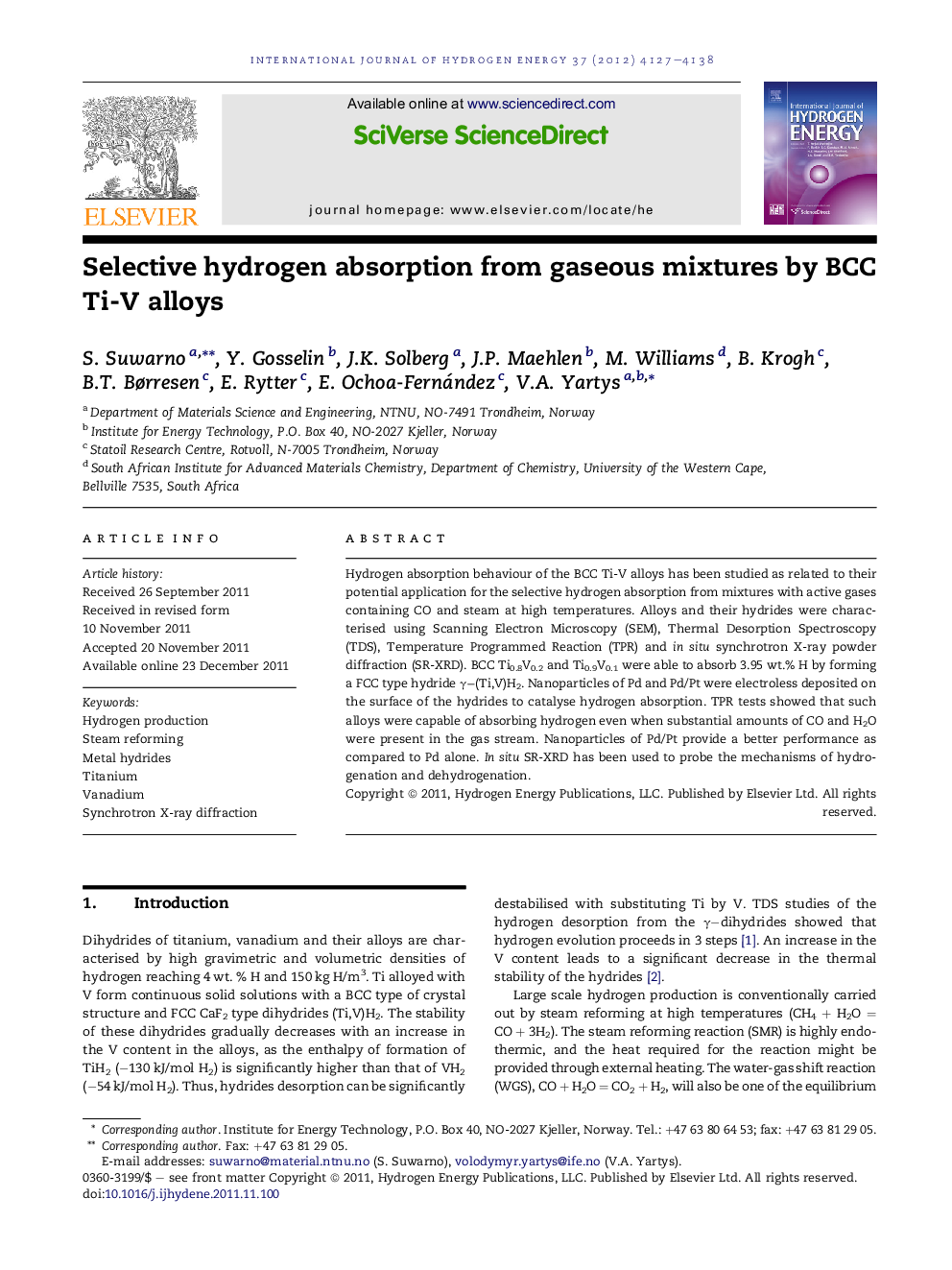| Article ID | Journal | Published Year | Pages | File Type |
|---|---|---|---|---|
| 1275466 | International Journal of Hydrogen Energy | 2012 | 12 Pages |
Hydrogen absorption behaviour of the BCC Ti-V alloys has been studied as related to their potential application for the selective hydrogen absorption from mixtures with active gases containing CO and steam at high temperatures. Alloys and their hydrides were characterised using Scanning Electron Microscopy (SEM), Thermal Desorption Spectroscopy (TDS), Temperature Programmed Reaction (TPR) and in situ synchrotron X-ray powder diffraction (SR-XRD). BCC Ti0.8V0.2 and Ti0.9V0.1 were able to absorb 3.95 wt.% H by forming a FCC type hydride γ−(Ti,V)H2. Nanoparticles of Pd and Pd/Pt were electroless deposited on the surface of the hydrides to catalyse hydrogen absorption. TPR tests showed that such alloys were capable of absorbing hydrogen even when substantial amounts of CO and H2O were present in the gas stream. Nanoparticles of Pd/Pt provide a better performance as compared to Pd alone. In situ SR-XRD has been used to probe the mechanisms of hydrogenation and dehydrogenation.
► Excellent kinetics of H absorption by Ti-V alloys at various working temperatures. ► Selective H absorption from H2+CO gas mixtures containing up to 10% CO. ► FCT hydride (H/M = 1.5) was a major product after 3 des–abs cycles in H2+10% CO. ► Formed on cycling HCP alloy contained oxygen and was inactive in the hydrogenation.
